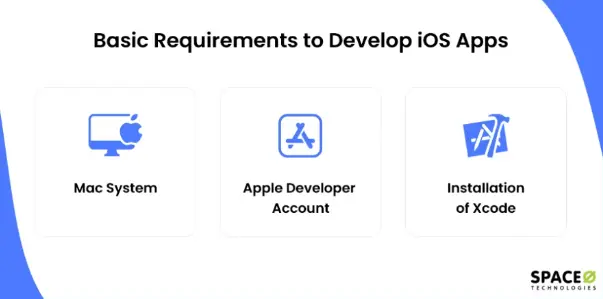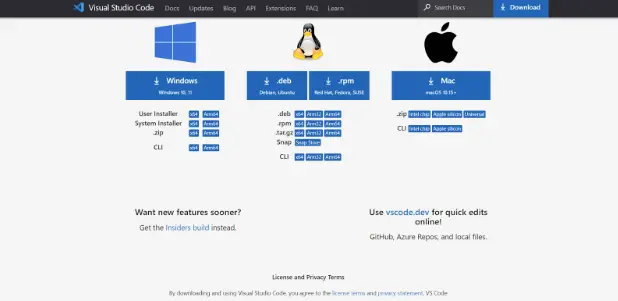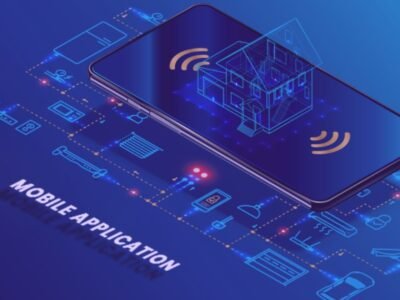Developing iOS applications is an intricate yet rewarding journey that demands meticulous planning, creativity, and technical prowess. If you’re venturing into mobile app development for iOS, here’s a comprehensive step-by-step guide to navigate through this process successfully.
If you don’t have any experience in IOS app development let me help you with that, out there you can find great companies that give IOS App Development Services.
IOS App Development Requirements
To embark on the journey of iOS app development, it is imperative to understand the comprehensive set of requirements that ensure a smooth and successful development process. When aiming to develop iOS apps, the first step is to grasp the intricacies of mobile app development for iOS.
This involves choosing the appropriate programming language, either Swift or Objective-C and setting up the development environment using Apple’s powerful Xcode IDE. In the realm of developing iOS applications, careful consideration should be given to the iOS development app design principles, ensuring that the user interface (UI) and user experience (UX) align with Apple’s guidelines.
The core development for iOS also necessitates creating a feature set, wireframing the app’s layout, and prioritizing functionalities based on their importance and feasibility. Whether you’re developing an app for iOS or contemplating mobile development for iOS, integrating backend services, conducting thorough testing, and optimizing performance are indispensable requirements.
Furthermore, adherence to the iOS applications development guidelines is paramount for a seamless submission process on the App Store. In summary, understanding and meeting these multifaceted requirements is key to a successful iOS development apps journey.

Basic Requirements to Develop IOS Apps
READ How To Sell Your Book In Amazon [Top 50 ebook Marketing Tips]
Mac OS System
It includes ( Macbook, iMac, Mac mini, Mac Studio, Mac Pro), without Mac OS you can not build iOS apps.
In the realm of Mac OS systems, the development landscape extends beyond iOS applications, encompassing a broader ecosystem. Developers engaging in mobile app development iOS often find synergy with the Mac OS environment, leveraging the powerful Xcode IDE for coding, debugging, and testing. Whether you’re developing apps for iOS or diving into mobile app development for iOS, the Mac OS system serves as the foundational platform for crafting seamless and efficient applications.
The versatility of the Mac OS system extends to encompass not only the coding aspects but also providing a robust environment for designing the user interface (UI) and ensuring a compelling user experience (UX) – aligning with the stringent mobile development iOS design principles. Just as in developing iOS applications, the Mac OS system offers a comprehensive suite of tools to streamline the development process.

Mac OS System
From the initial ideation phase, wireframing, and prototyping, to integrating backend services and optimizing performance, the Mac OS system plays a central role in the holistic development journey. In essence, the Mac OS system is an integral component of the broader canvas that developers navigate when venturing into the intricate world of mobile development iOS.
Apple Application Developer Account
Obtaining an Apple Application Developer Account is a pivotal step for individuals or teams venturing into the dynamic field of mobile application development iOS. This account is the gateway to the expansive ecosystem of Apple’s development tools, including Xcode, the preferred Integrated Development Environment (IDE) for developing apps for iOS.
To initiate your journey in mobile app development for iOS, creating an Apple Developer account is imperative. This account not only facilitates the submission of applications to the App Store but also serves as the hub for managing assets such as icons and screenshots, adhering to the stringent mobile application development iOS design principles.

Apple Application Developer Account
Whether you are developing an app for iOS or focusing on iOS applications development, the Apple Developer account is the linchpin that provides access to the resources essential for coding, testing, and launching applications. From the initial planning phases to the post-launch support, a valid Apple Developer account is a foundational requirement for anyone looking to thrive in the vibrant world of iOS app development.
Xcode IDE / Visual Studio Code
When delving into the realm of developing an app for iOS, the choice of Integrated Development Environment (IDE) plays a critical role, and two prominent contenders are Xcode and Visual Studio Code. Xcode, an integral part of the mobile app development for iOS ecosystem, stands out as Apple’s preferred IDE.
It provides a comprehensive suite of tools for coding, testing, and debugging, making it the go-to platform for those aiming to develop iOS applications. On the other hand, Visual Studio Code offers a versatile and lightweight alternative, catering to developers engaged in developing apps for iOS using a more customizable environment.

Xcode IDE
Whether you’re developing an app for iOS adhering to iOS app development design principles in Xcode or embracing the flexibility of Visual Studio Code, both IDEs are essential tools for crafting efficient and feature-rich applications. Navigating the intricacies of iOS applications development is streamlined by leveraging the functionalities of these powerful IDEs, ensuring a smooth and productive development experience.

Visual Studio Code
ALSO READ Top 7 Mobile App Development Platforms
How to Develop an IOS App in 10 Easy Steps
Define Your App Idea and Purpose
The cornerstone of any developing iOS app lies in the idea generation phase. Developing apps for iOS begins with brainstorming and identifying a unique concept that addresses a particular need or problem. Conduct thorough market research for iOS app development, analyzing competitors and understanding your target audience’s preferences to validate your idea.
Plan Your App
Wireframing and prototyping play a pivotal role in developing iOS applications. Create sketches or digital wireframes to visualize the app’s layout and functionalities. Define the core features and functionalities while prioritizing based on importance and feasibility for mobile app development on iOS.
Design the User Interface (UI) and User Experience (UX)
Crafting an appealing UI and ensuring a seamless UX is crucial in iOS applications development. Adhere to Apple’s Human Interface Guidelines, emphasizing to develop an app for iOS design principles to develop a visually appealing, intuitive interface that ensures a smooth user experience.
Choose the Right Development Tools and Technologies
The choice of programming language, whether Swift or Objective-C, is pivotal in developing an app for iOS. Swift is often preferred for iOS app development, and utilizing Apple’s Xcode Integrated Development Environment (IDE) is essential for coding, testing, and debugging.
Start Development
The development phase involves coding the app’s features, integrating UI elements, and continuously testing the app for bugs. Consider beta testing with a limited user group to gather feedback for developing iOS app.
Integrate Backend Services (if required)
For apps requiring backend support, implementing necessary functionalities like databases, APIs, and user authentication is vital for mobile application development on iOS.
Optimize and refine
Performance optimization and refinement are ongoing tasks and to develop application for ios. Focus on minimizing loading times, optimizing performance, and incorporating user feedback for enhancements.
Prepare for App Store Submission
Adhering to Apple’s App Store guidelines is crucial for a successful submission. Create an Apple Developer account, prepare required assets like icons and screenshots, and submit the app for review.
Launch Your App
A well-planned launch strategy is essential for promoting your app. Engage in marketing, press releases, and social media campaigns to ensure a successful launch. Post-launch support involves addressing user feedback and consistently updating the app with new features for mobile app development for iOS.
Monitor and Update
Track app performance using analytics tools, monitoring user behavior, engagement, and usage patterns. Regularly update the app to align with the latest OS versions and incorporate bug fixes and feature enhancements for developing iOS apps.
Frequently Asked Questions
- Virtual Machines: Use tools like VMware or VirtualBox to create a virtual macOS environment on your Windows PC, allowing you to run Xcode.
- Cloud-Based Services: Explore cloud-based macOS development environments, like MacStadium or MacinCloud, which provide remote access to macOS to develop apps for iOS.
- Cross-Platform Frameworks: Utilize cross-platform frameworks such as Flutter or React Native, enabling development on Windows and supporting deployment on both iOS and Android.
- Hire a Mac: Consider renting a physical Mac from a service like MacStadium for a specific duration, allowing you to remotely access a macOS machine for developing iOS applications.
- Use Hackintosh: Create a Hackintosh, a non-Apple computer running macOS. Note that this approach has legal and technical challenges and may not be recommended.
Conclusion
Embarking to develop an application for iOS is a thrilling venture, and this guide offers a comprehensive roadmap from ideation to deployment. The dynamic process requires a mix of creativity, technical know-how, and adherence to Apple’s guidelines.
From understanding iOS app development requirements to leveraging tools like Xcode and Visual Studio Code, each step contributes to a holistic process. Obtaining an Apple Developer Account is crucial, acting as a gateway to Apple’s ecosystem.
READ MORE 7 Leading Mobile App Design Agencies You Should Know
Choosing between Xcode and Visual Studio Code empowers developers, and the guide delves into critical phases from planning to App Store submission. FAQs provide clarity on essential aspects and insights into iOS app development on Windows offer solutions.
In essence, this guide is a valuable resource for beginners and seasoned developers navigating the world of iOS app development in 2024, ensuring a successful and fulfilling journey.
















Comments